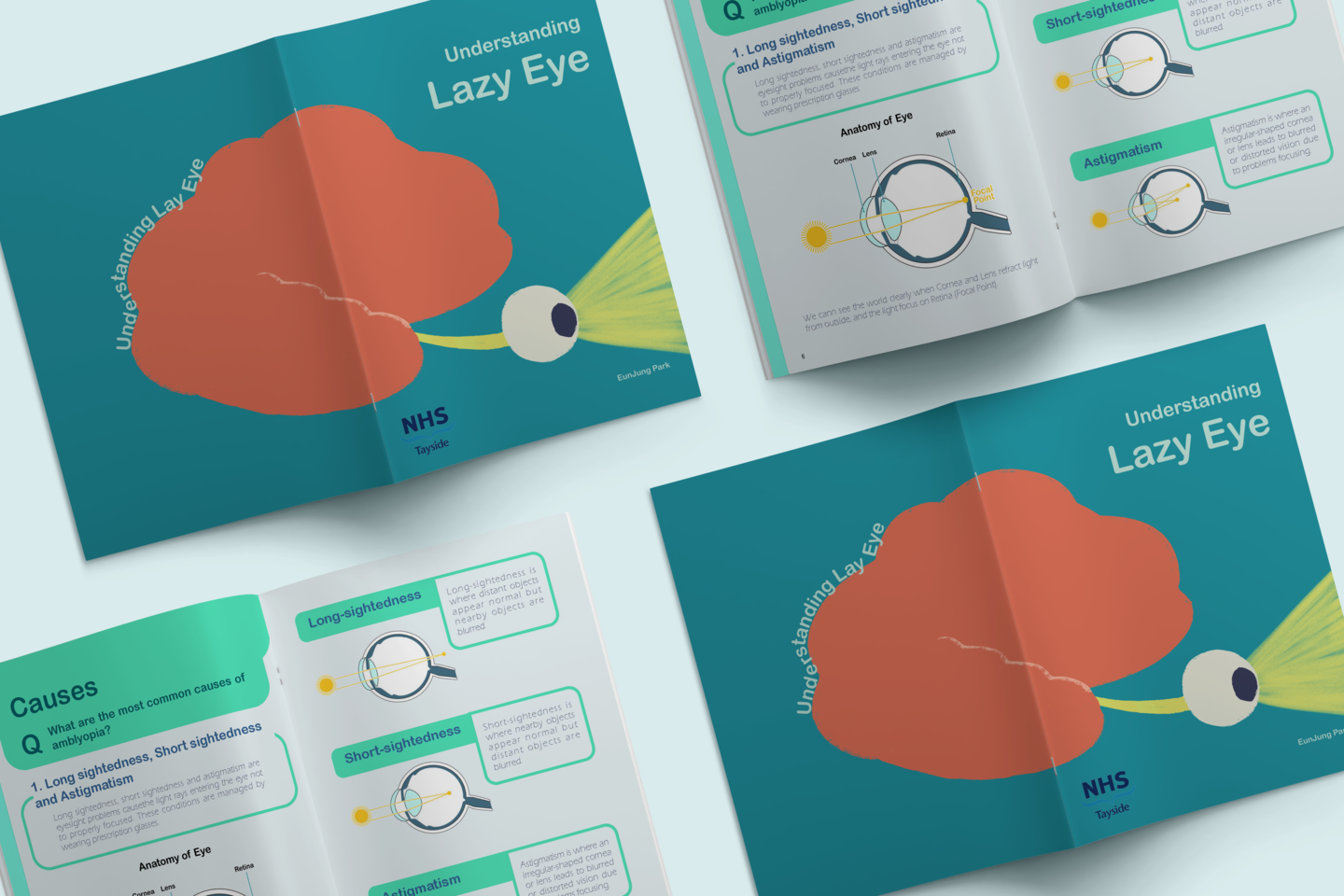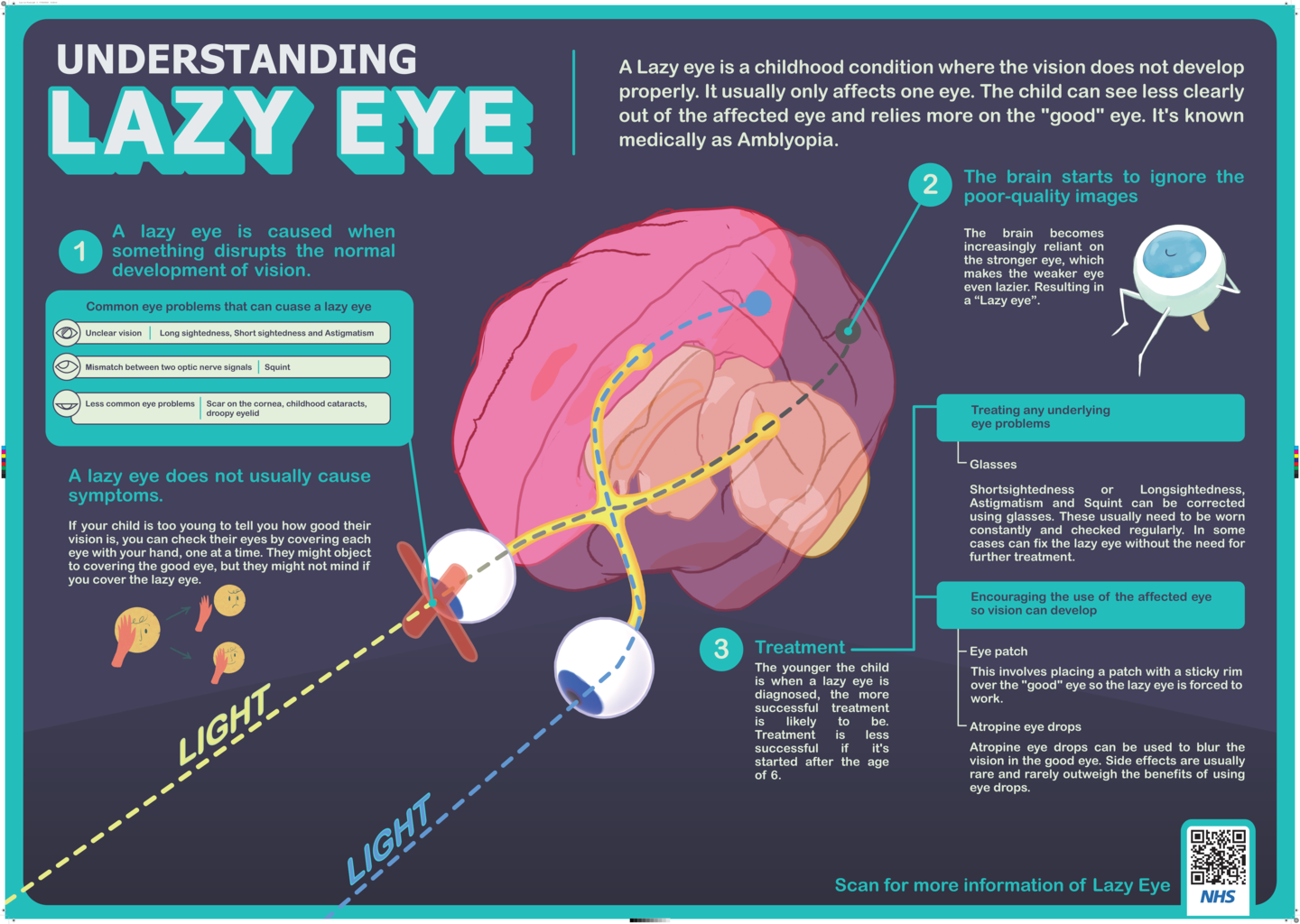Eunjung Park
This project aimed to create a booklet attached with educational animation interactive 3D model for the parents of patients with amblyopia (lazy eye).
About

Lazy eye is a childhood condition where the vision does not develop properly. It is known medically as amblyopia. It happens because one or both eyes are unable to build a strong link to the brain. It usually only affects one eye and means that the child can see less clearly out of the affected eye and relies more on the good eye. It is estimated that one in 50 children develop a lazy eye. The knowledge and awareness of lazy eye could bring a higher chance of recovery. Addressing childhood visual impairment effectively requires educating patients' caregivers. A booklet of the project and an accompanying animation and 3D model were created to help and educate caregivers of patients with lazy eye.
Booklet of Understanding Lazy Eye

One of the strategies to address visual impairment is through health promotion. For children, the efficient way of intervention is through parents and their school environment. Thus, addressing childhood blindness effectively requires educating parents and health care providers. The accompanying animation provided basic information on the anatomy of the eyes about amblyopia and linked to the booklet via a QR code. The 3D model of the brain and the optic nerve is published on SketchFab and the link of it is attached to the booklet and YouTube. It is envisioned that the animation will encourage an interest in the causes of amblyopia and aid in understanding and compliance.
Poster of Understanding Lazy Eye

This infographic poster shows overall information of lazy eye.
3D Model
This model shows the following parts of the body
- Eye
- Optic nerve
The optic nerve is critical to your vision. It's an extension of your central nervous system, which includes your brain and spine.
The optic nerve transmits electrical impulses from your eyes to your brain. Your brain processes this sensory information so that you can see.
- Optic chiasm
The optic chiasm, or optic chiasma, is the part of the brain where the optic nerves cross and is therefore of primary importance to the visual pathway.
- Optic trac
- Lateral geniculate body
- Primary visual cortex
The visual cortex is the primary cortical region of the brain that receives, integrates, and processes visual information relayed from the retinas.
- Cerebrum
- Cerebellum
Animation of Understanding Lazy Eye
This 1min animation is providing a basic information of lazy eye. You can watch this animation on my Medical Art YouTube channel!
Exhibition
Please come and find a tiny eyeball character named 'Iris'!
Downloads
Support this graduate
If you are interested in my future projects, please follow my Instagram!